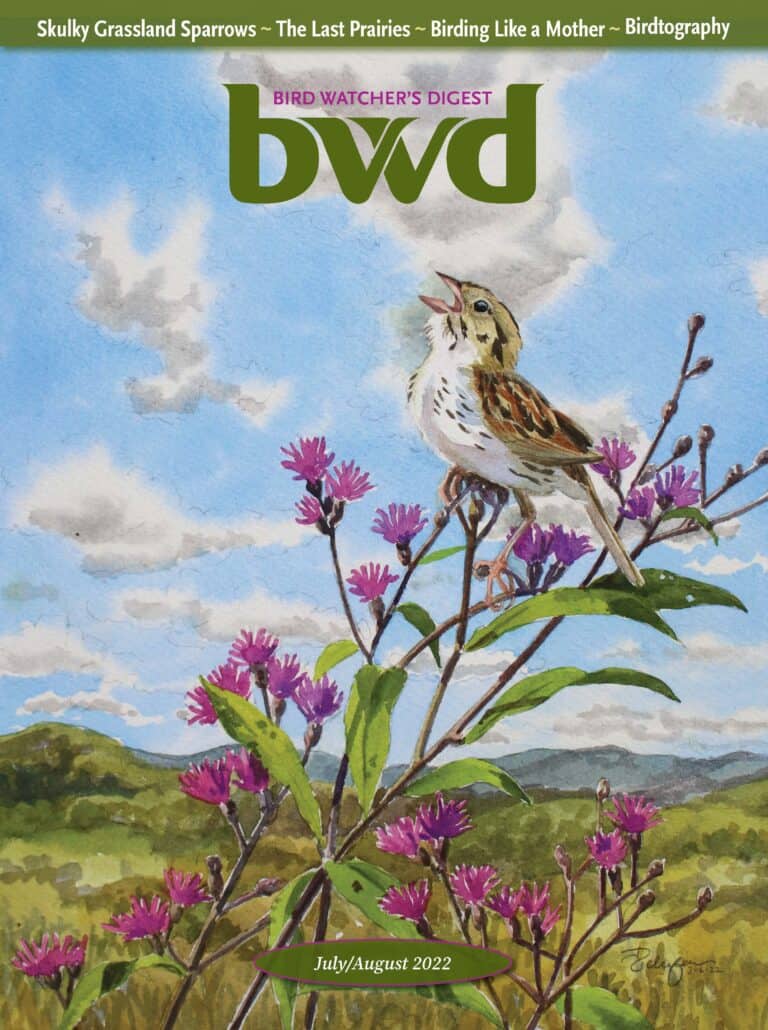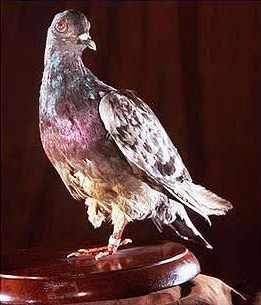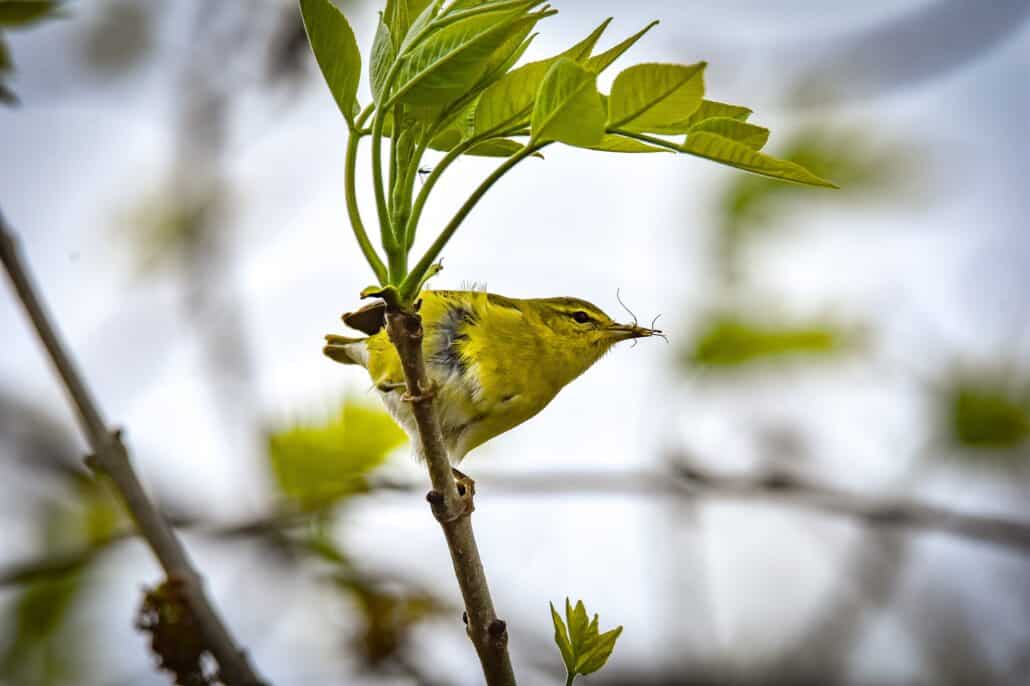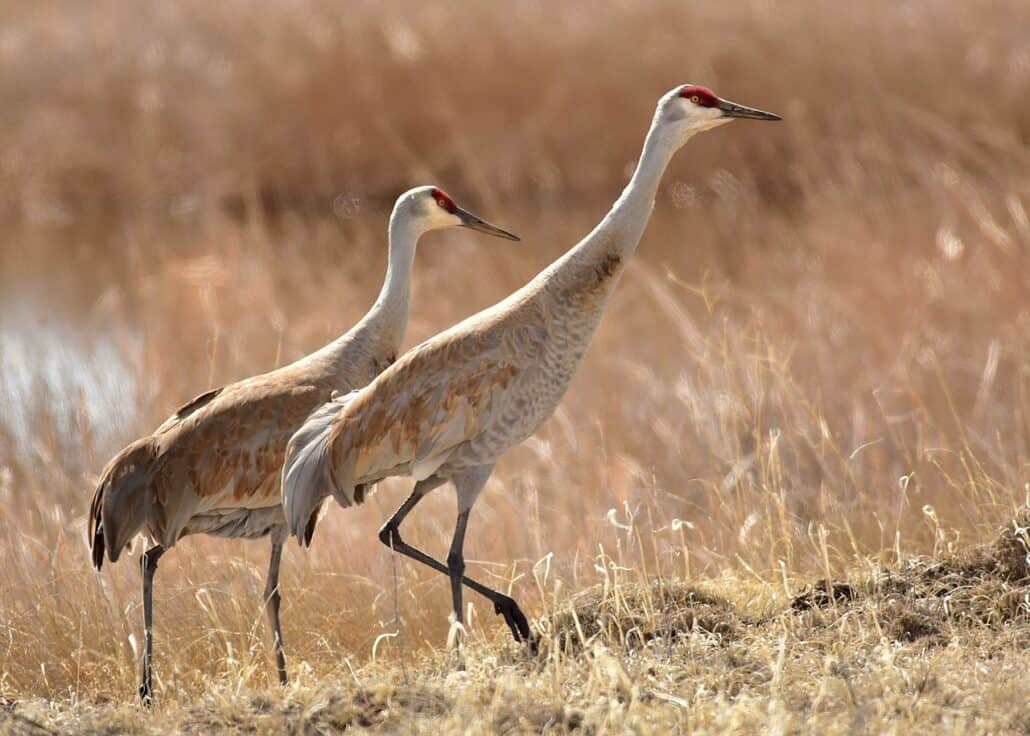Ultimately, this story is about birds. Trust me.
For more than a decade I have been a dedicated composter. I don’t let a scrap of food go into the trash or garbage disposal. What doesn’t get eaten has gone into one of my two compost bins. Corn husks and cobs, citrus peels, avocado and peach pits, and other big, hard food waste went into my huge bin, along with weeds, small sticks, and other yard and garden waste. But smaller, softer food scraps and plate scrapings went into my worm farm.
Yes, worms. For more than a decade I’ve kept—and appreciated—working animals: thousands of red wigglers, who live in a plastic, stacking, commercial worm farm. The worm farm wintered in my basement, but spent spring through fall outdoors under my deck. I added food scraps and brown paper bags, newspaper strips, or natural-fiber paper towels to the top tray.
The lower trays contain older such material, and worms: tens of thousands of critters that look like small nightcrawlers—earthworms, but quarter-scale, and red. By the time the top tray is full of fresh waste, the bottom tray is full of rich, black, spongy worm castings that are a fantastic additive to garden soil, adding texture and tilth to the clay that is the primary component of the native soil of my backyard. I loved my worms and the rich soil amendment they produce!

A couple of times a year, I’d empty the bottom tray onto sheets of newspaper, and separate the castings from the worms. Some people would find it to be icky, but it never smelled bad, and I didn’t mind. By the way, vermiculture, aka raising composting worms, is “a thing.” You can do your own research if you’re interested.
Last summer, I noticed a few creepy-crawlies in the top tray. They didn’t fly, but they were very active. I wasn’t concerned because the instructions for my commercial worm farm stated that vermiculture creates an ecosystem, and I shouldn’t be surprised to find other critters in there occasionally. But over the next few weeks, the population of creepy crawlies grew exponentially, and even seemed to become more numerous than the red wigglers. It was disturbing.
Through internet research I determined that these critters were black soldier fly larvae, and that they are bad news for a vermiculture facility. Not only would the larvae consume all the food and paper scraps faster than the worms, they’d eventually eat all the worms, and even the worm castings—and eventually each other. And so it happened. Within a few weeks, my worm farm was lifeless. I scraped out the cruft of all three trays into a garden bed.

I never once saw a single black soldier fly. I can only imagine that a female laid a bazillion eggs in my worm farm, and they all hatched and consumed everything, and died. In my ten-plus years of worm composting, this had never happened before. It made me sad. I’m not squeamish about worms, but those black soldier fly larvae were kind of creepy, mostly because they were so abundant, and so squirmy, and because I didn’t know what to do, how to save my worms, or how to get rid of these invaders.
Well, dummy me! Black soldier fly larvae are a natural food for birds! I should have relocated that top tray full of them to my jungle-like backyard, where mockingbirds, wrens, catbirds, and other insectivores birds could have feasted upon them! They are more nutritious than mealworms, and birds are said to be crazy for them.
The larvae didn’t stink (neither did the worm farm), and black soldier fly larvae can be—and are—used for composting, especially on a commercial scale; and they are faster, more thorough, and efficient than red wigglers. They also require a lot more food waste to keep the colony viable than most households can provide. Unlike houseflies, black soldier flies aren’t known to spread disease. They don’t bite, and they typically don’t annoy people. Heck, they reproduced like mad under my deck, and I never saw even one!
Learn more about using black soldier fly larvae to feed backyard birds! In the latest episode of BirdSense, host Kelly Ball interviews Andrew Vickerson, chief technology officer of Enterra, a company formed to find new, sustainable protein sources for animal feed, and Tom Goldsborough, an avid birder who recently conducted a survey of his backyard feeders to determine whether songbirds preferred black soldier fly larvae over mealworms.
According to Wikipedia: “The larvae and adults are considered neither pests nor (disease) vectors. Instead, black soldier fly larvae play a similar role to that of redworms as essential decomposers in breaking down organic substrates and returning nutrients to the soil.… They are not a pest to humans. Unlike houseflies, adult black soldier flies have greatly reduced sponging mouthparts and can only consume liquids such as flower nectar or do not eat at all. They do not regurgitate food along with digestive enzymes like houseflies, thus do not spread diseases.… They are not attracted to human habitation or foods.”

The larvae are fascinating to me now. I’m not going to try growing them, but I am going to experiment with offering commercially available freeze-dried black soldier fly larvae to birds. A company called Enterra is interested in selling freeze-dried black soldier fly larvae as a protein-rich backyard bird food. Do birds prefer them over dried mealworms? Do they attract a wider variety of birds than mealworms? I don’t know yet! I’ll “publish” my results at a later date.

Looking to Subscribe?
Get 6 print issues of the magazine delivered to your door & free digital access
One Year Print Subscription: $26
(to US or Canada, includes digital access)
One Year Digital-only Subscription: $15





Did you ever feed the fly larvae to your backyard birds? If so, how did they like them? I’m interested in using it instead of meal worms as it’s so much cheaper!
Hi, Julie,
Yes, I did! I offered both simultaneously, and they both disappeared. I was not able to determine whether the freeze-dried BSF larva or the dried mealworms were favored. I put out similar quantities of both—but didn’t have time to watch who was eating what, or if they moved between bowls, and ate one first, and then the other. I’m sorry. Life got in the way, and I didn’t have time to observe, as I had intended. Still, both bowls were empty, so somebody like black soldier-fly larva! I suspect the Carolina wrens ate both, but blue jays might have taken (more than) their share, too. I dunno. I’m sorry. If life ever settles down and I once again have time to spend hours watching my bird feeding stations, I might undertake this experiment more carefully.
My mealworm feeder stayed busy for months attracting wrens, red birds, chickadees, titmice. Then I replaced the dried mealworm larva with the BSF larva. The wild birds have stopped visiting the feeder. I’ll try mixing mealworms with BSF to bring the birds back and maybe wean them to the BSF.
For several years, I’ve been treating my backyard birds to dried mealworms twice a week, all year round. At times, I’ve substituted the mealworms with dried black soldier fly worms. For whatever reason, it seems the BSF worms are generally less expensive than mealworms. I have noticed that the birds seem to much prefer the mealworms over the BSF worms. For reference, I live in New England. Our year-round backyard friends include chickadees, titmice, cardinals, mourning doves, a zillion types of sparrows, and woodpeckers. Some bluebirds and finches stay all year. The juncos and the white-throated sparrows come here for winter. Our warm-weather friends are catbirds, finches, robins, grosbeaks, redwing blackbirds, wood-thrushes, towhees, etc. I can’t say that I’ve noticed the preference pattern occurring in a specific season. However, I’ve consistently seen that the BSF worms are eaten much more slowly (with less enthusiasm) than the mealworms.